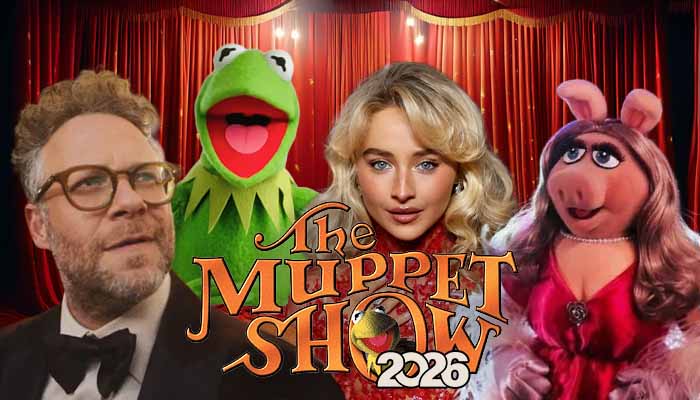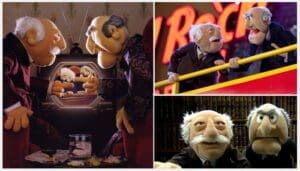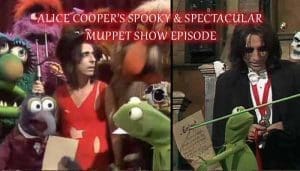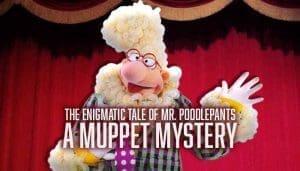Welcome, dear reader, to a meticulous, multi-thousand-word deep dive into the creative, corporate, and comedic machinations behind the 2026 Disney revival of The Muppet Show. You might be asking yourself why anyone would spend this much time and effort analyzing a television special starring a frog, a pig, and a whatever-Gonzo-is. The answer is simple: the delightful absurdity of it all. This report is not merely a collection of facts; it is a strategic blueprint for understanding a high-stakes cultural gambit. The goal is to produce a single, funny blog post that is not only witty but also demonstrates a profound understanding of the forces at play. To do so, a thorough examination is required.
The central thesis of this analysis is that the 2026 Muppet Show revival is far more than just a new program. It is a strategic effort, a creative experiment, and a high-stakes test run for the future of a beloved franchise. The special is explicitly a “backdoor pilot” for a new Muppet series, a term that turns a classic variety show into a corporate audition. The final blog post will find its humor in the stark contrast between the wholesome, felt-and-fleece world of the Muppets and the calculated, high-pressure world of Hollywood entertainment that now defines it. This project, with its unlikely creative team, signals a massive and potentially pivotal shift for the brand, and it is here that the true comedic gold lies.
Act I: The Muppet-Industrial Complex: A Look at the Cast of Characters Behind the Curtain
The success of the 2026 revival hinges on a fascinating collection of creative choices that appear, on the surface, to be entirely contradictory. This team of executive producers, a director, and a guest star have been assembled as a deliberate attempt to solve the franchise’s biggest problem: its inability to find a consistent, modern identity that resonates with a broad audience. The decisions made behind the scenes are arguably more interesting than the show itself, and they are the key to its potential success.
The Unlikely A-Team: From R-Rated Raunch to Rated-G Revival

The production team for the 2026 Muppet special is a study in creative dissonance. The special is written by Albertina Rizzo, produced by The Muppet Studio, and directed by Alex Timbers, but the headline names are Seth Rogen and Evan Goldberg’s Point Grey Pictures. This is where the comedy begins. The creators of
Superbad, Pineapple Express, and Sausage Party are now tasked with reviving a family-friendly franchise created by Jim Henson. The inherent humor of this partnership stems from the cognitive dissonance it creates: will Statler and Waldorf’s heckling suddenly become more vulgar, or will they simply be commenting on the streaming service’s user interface? This choice suggests a strategic move toward a more self-aware, meta, and adult-friendly brand of humor. This was a hallmark of the original show’s success, which had a sophisticated wit that appealed equally to children and adults. The decision to bring in outside, non-traditional comedic talent signals a willingness to break from the more sanitized, and often less successful, Disney-only efforts of the past.
The casting of pop star and Broadway veteran Sabrina Carpenter as the guest star is perhaps the most explicit strategic move of all. Carpenter is a Gen Z icon, and her guest-starring role, coupled with her co-executive producer credit, is a direct and transparent attempt to bridge the generational gap and attract a new, younger audience. The fact that she is a young pop sensation who just happened to wear a Miss Piggy-inspired look to the VMAs is a marketing windfall, a nod to the Muppets’ enduring pop culture relevance. The final blog post can satirize this by imagining Miss Piggy’s fury at having her spotlight stolen by a new, younger celebrity, creating a mock rivalry that is as old as Hollywood itself.
Finally, the selection of Tony winner Alex Timbers as director suggests a deep respect for the franchise’s origins. Timbers previously directed a “proof-of-concept Muppets theater production in 2013” , indicating a pre-existing understanding of the Muppets’ stage-based roots. His theatrical background could be a deliberate choice to return to the vaudeville format that defined the original series. This creative team, therefore, is not a random assortment of names; it is a carefully calculated mixture of old and new, tradition and rebellion, designed to please both the nostalgic purist and the TikTok generation.
The New Muppet Show’s A-Team (And Why It Matters)
| Key Player | Role | Relevant Past Work | Strategic Significance |
| Seth Rogen & Evan Goldberg (Point Grey Pictures) | Executive Producers | Superbad, Pineapple Express | The bridge to meta-humor; a direct acknowledgment of the franchise’s adult appeal. |
| Sabrina Carpenter | Guest Star, Co-EP | Pop music, acting, Broadway | The bridge to Gen Z; a transparent attempt to attract a new, younger audience. |
| Alex Timbers | Director | Broadway/theater productions, Muppet stage production (2013) | The return to theatrical roots; a nod to the vaudeville format that made the original a classic. |
| The Muppet Studio | Producers | The Muppet Show (original), Muppets Mayhem | The keepers of the original “magic”; a direct link to the franchise’s heritage and legacy. |
The collaboration between Point Grey and The Muppet Studio is a direct result of Disney’s previous, mixed results with the franchise. The company has attempted various formats in recent years, including the limited series The Muppets Mayhem (2023), the short-form Muppets Now (2020), and the one-off special Muppets Haunted Mansion (2021). While some projects, like
Mayhem, received praise for the characters and puppetry, they struggled to find a cohesive narrative or wide audience, largely due to a perceived lack of humor in the human storylines. The decision to bring in outside, and particularly non-traditional, comedic talent like Rogen is an explicit attempt to move away from what hasn’t worked and try to crack the code for a modern audience.
The fact that the special is a “backdoor pilot” is not just a business term; it is a narrative device ripe for comedic exploitation. The special is a “test run” for a full series, meaning its success will determine if it moves forward. This creates an inherent tension. The Muppets themselves—Kermit, Miss Piggy, Fozzie, and Gonzo—will be acutely aware of this high-pressure situation, which can serve as the central conflict of the show’s backstage antics. The special transforms the classic “let’s put on a show” plot into a meta-commentary on the streaming industry, a theme that Rogen and Goldberg’s Point Grey Pictures is perfectly suited to satirize. This framing allows the final blog post to mock the business side of Hollywood by portraying the special as a “live job interview for puppets.”
Act II: The Ghost of Revivals Past: Learning to Fly… Or Not
To understand the stakes of the 2026 revival, it is essential to look at the Muppets’ long and winding journey to this point. The franchise has a storied history, one that has seen both groundbreaking success and mixed creative results. The current project exists not in a vacuum but as the latest attempt to bottle the unique magic of the original series.
The Original Muppet Magic: A Vaudevillian Anomaly
The original The Muppet Show, which ran from 1976 to 1981, was groundbreaking television. Created by Jim Henson, it was a syndicated variety show that starred a troupe of puppet characters including Kermit the Frog, Miss Piggy, and Fozzie Bear, as they attempted to put on a weekly vaudeville show. The show’s genius lay in its dual appeal; it was a children’s show that was equally entertaining for adults, a quality that set it apart from its other Henson-created counterpart,
Sesame Street. Its format, which allowed for both on-stage sketches and backstage antics, was a perfect showcase for the characters’ personalities.
The creative synergy between Jim Henson and Frank Oz was the heart of the original series. Their collaboration produced iconic pairs like Kermit and Miss Piggy, as well as the Swedish Chef, a character that embodied their collaborative chaos. The show was a global phenomenon, broadcast in over 100 countries during its run. It featured a steady stream of celebrity guest stars, from Elton John to Liza Minnelli, who were often the perfect catalysts for Muppet nuttiness. This history establishes the “magic” that Disney is now trying, once again, to recapture.
The Revival Trap: A Cautionary Tale for Nostalgia-Baiters
The 2026 Muppet special is entering a treacherous space: the television revival. A revival is not a remake; it “remains (more or less) in continuity with its predecessor”. It revisits beloved characters “some years later” and features the original cast in “older and wiser” roles. The challenge of a revival is to be different enough to feel relevant to a new audience, but not so different that it alienates the “enraged fan-base” that it relies on for its initial success. The research identifies the revival as a “crapshoot” , acknowledging that the line between success and spectacular failure is razor-thin.
The paradox is that if a revival is too similar to the original, it invites unfavorable comparisons to a show that is often held up as a creative golden age. If it is too different, it risks losing the very audience that nostalgia-driven projects are designed to attract. The final blog post can frame this as a tightrope walk for Kermit, who has to please both the brand managers looking to monetize an old IP and the purist fans who refuse to accept any changes.
The Disney Scorecard: Mayhem and Other Missteps
Disney has been increasingly “bullish on the Muppets in recent years,” but its attempts to find a winning formula have met with mixed results. The research presents a contradictory view of these projects. While some were “short-lived despite positive fan response,” others were met with “mixed reactions” from the audience. The 2023 limited series
The Muppets Mayhem provides a perfect case study for the problems the revival aims to solve. One review for Mayhem praised the Muppet characters and the celebrity cameos, but criticized the human elements, calling the love triangle “uninspired” and the lead actress’s performance “hammy”. Another review echoed these sentiments, finding the story “strange” and a “chore to watch,” noting that it struggled to stretch a thin premise across five hours of content. These reviews underscore a critical problem: while the puppets themselves remain beloved, the human-centric plots and new formats have failed to resonate.
This history makes the 2026 special feel like a crucial, all-or-nothing effort. By bringing in outside creative talent and explicitly returning to the classic vaudeville format, Disney is not just creating a show; it is performing a course correction based on a decade of trial and error.
Table 2: The Muppet Revival Scorecard
| Project | Format | Fan/Critical Reception | Lesson Learned |
| Muppets Haunted Mansion (2021) | One-off special | Positive | Thematic one-offs can work; they provide a focused, self-contained experience. |
| Muppets Now (2020) | Short-form series | Mixed | Improv and short-form content is a tough sell for the franchise. |
| The Muppets Mayhem (2023) | Limited series | Split/Contradictory | The Muppet characters are still beloved, but the human element and narrative structure need significant work. |
Export to Sheets
Act III: The Audience in the Balcony: Who Is Disney Trying to Please?
No television show exists without its audience, and the reception of a Muppet revival is particularly complex due to the franchise’s long history and the divergent expectations of its fans. The online debate surrounding the 2026 special is a key source of humor, as it highlights the generational and ideological gaps that the show must navigate.
The Great Fan Schism: The Thrilled vs. The Skeptical
The initial fan reaction to the revival announcement has been explicitly “split”. On one side are the enthusiasts who are “thrilled at the prospect of a return to the classic Muppet Theatre setup,” with some calling it “the comeback we’ve been waiting for”. These are the fans who want a return to the golden age, a continuation of the tradition established by Jim Henson. On the other side are the skeptics. One viral post captured this sentiment, arguing that Disney “keep[s] trying to recapture the magic and just don’t have it”. These fans have been burned by past projects that didn’t live up to the original’s standard and are cautious of another attempt. This duality provides a direct window into the audience’s mind and allows the final blog post to frame the revival as a battle for the very soul of the franchise, with Kermit caught in the middle.
The Generational Gap: The Pop Star and the Frog
The casting of Sabrina Carpenter is a clear signal that Disney is targeting Gen Z. This creates an immediate opportunity for humor. The final blog post can speculate on what this means for the show’s content. Will Gonzo’s stunts now have to go viral on TikTok to be considered successful? Will the Electric Mayhem start sampling Doja Cat and creating lo-fi beats to appeal to a new audience? The central humor of this new era will come from the collision of classic, hand-crafted charm with the rapid-fire, algorithm-driven world of modern media.
The Muppets have a long and successful history of adapting to new media formats. From their debut on the five-minute live show Sam and Friends to their role in the educational Sesame Street, the Muppets have consistently met audiences where they are. In the early 2010s, their social media presence was praised for its pop culture savvy and viral content creation. The challenge for the 2026 revival is to continue this tradition without losing the core, hand-crafted charm that made them beloved in the first place. The contradictory reviews of
Muppets Mayhem highlight this struggle: the characters were great, but the generic, streaming-friendly human plot didn’t land. The current project aims to fix this by bringing in comedy experts who can write a fresh and compelling human story, a move that recognizes the franchise’s need for both creative fidelity and modern relevance.
This ability to be culturally aware has always been a key to the Muppets’ success. Long before social media, they used celebrity guest stars to connect with the zeitgeist of the time. From Rudolf Nureyev to Diana Ross, the show always featured the most prominent names in entertainment. Sabrina Carpenter is the modern-day equivalent of these pop culture titans. The final blog post can frame her casting as a continuation of this tradition rather than a departure, providing a positive and compelling angle to balance the inherent skepticism of another revival.
Act IV: The Final Rehearsal: The Blueprint for a Funny Blog Post
This final section distills the detailed analysis into a concrete, strategic plan for the final, humorous blog post. The analysis has established the core conflicts and the key players, and now it is time to translate that understanding into a witty, well-informed piece of content.
The “Pitch”
The final blog post will adopt the persona of a cultural critic who is both an obsessive fan and a jaded industry observer. The tone will be self-aware, witty, and deeply informed, serving as a guide for both die-hard fans and casual viewers. It will acknowledge the inherent humor of the situation while celebrating the creative choices that make this revival different from past attempts.
The Jokes
The humor will stem from the central tension between corporate interests and creative integrity. Specific comedic angles will include:
- The absurdity of the pairing: The simple fact that the creators of Superbad are now responsible for the Muppets.
- The backdoor pilot meta-narrative: The entire show can be framed as an over-the-top job interview for the Muppets, with a tense Kermit trying to impress the executives at Disney+.
- The generational gap: Miss Piggy’s instant and over-the-top rivalry with Sabrina Carpenter, culminating in a Muppet-sized “feud.” Gonzo’s stunts, now rebranded as “viral marketing activations” for the brand.
- The revival tropes: Fozzie Bear’s jokes about the revival’s clichés, which, naturally, fall flat with both the audience and his fellow Muppets.
- The return to the vaudeville format: Statler and Waldorf’s heckling will be modernized to comment on the nature of streaming, the length of modern shows, and the existence of a “backdoor pilot.”
The Hooks
The proposed opening line sets the tone by immediately acknowledging the absurdity and pop culture relevance of the project: “Someone wake up Statler and Waldorf! Not because they’re old and should probably be in bed, but because Disney has just announced the 2026 revival of The Muppet Show, and their brand of cynical, fourth-wall-breaking commentary has never been more relevant.”
The proposed closing line will synthesize the entire report, leaving the reader with a final, humorous thought that encapsulates the project’s high stakes: “Whether this revival is a return to form or just another trip down nostalgia lane, one thing is certain: The Muppet Show is back, and the backstage drama has never been more profitable. Wocka Wocka!”
The Visuals
To enhance the humor and storytelling, the blog post will be accompanied by specific, strategically chosen visuals. A side-by-side image of Seth Rogen’s signature laugh and a wide-eyed, panicked Fozzie Bear can visually represent the creative dissonance. A GIF of Miss Piggy throwing a tantrum, with the caption: “When you find out the guest star is a co-executive producer,” directly visualizes the core comedic conflict. The official teaser image of Kermit’s coffee mug, alone on a table, can be used to symbolize the show’s return, while a GIF of Gonzo performing one of his bizarre stunts will highlight the show’s embrace of modern marketing.
Conclusions
The 2026 Muppet Show revival is a complex and fascinating project that goes far beyond a simple return to television. It is a strategic experiment by Disney to find a new, sustainable format for a beloved franchise. The company has learned from its past missteps, particularly the criticisms leveled at its recent projects for lacking a strong, compelling human element. By returning to the vaudeville format and bringing in outside comedic and pop-culture talent, the project aims to appeal to both the nostalgic purist and the young, modern audience.
The creative team’s choices, from hiring the creators of Superbad to casting a Gen Z icon as a co-executive producer, suggest a deep understanding of what made the original show special—its self-aware, adult-friendly wit—and a willingness to break from past, failed formulas. The project’s success is not guaranteed, as the revival remains a genre of extreme highs and lows. However, the choices made behind the curtain suggest a deliberate and intelligent attempt to recapture the original magic while ensuring the franchise remains relevant for decades to come. The humor of the final blog post will lie in watching this delicate corporate-creative gambit unfold on screen.




